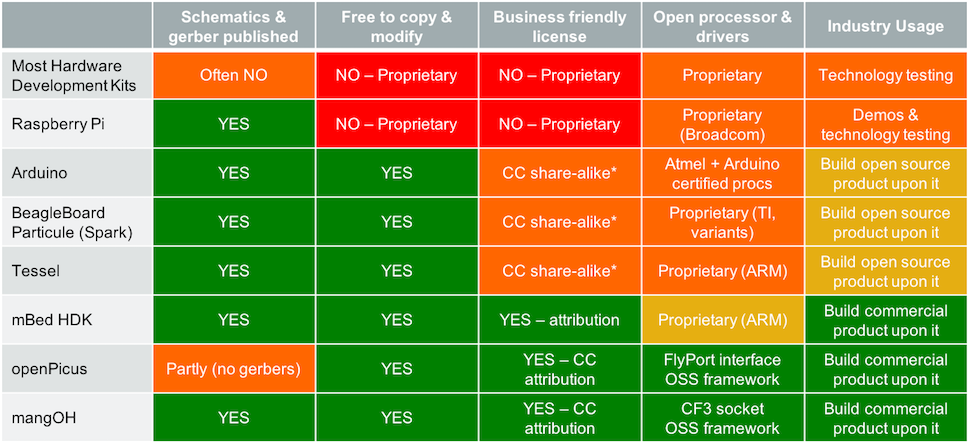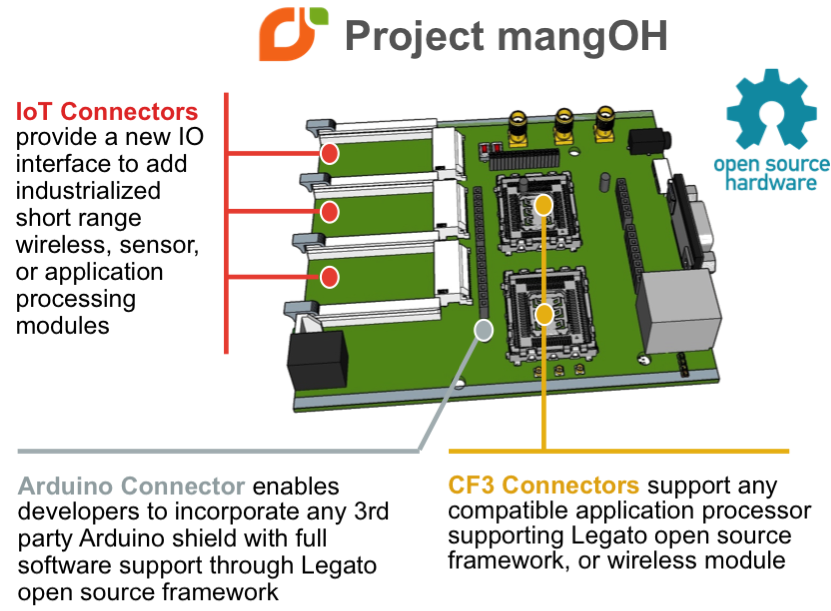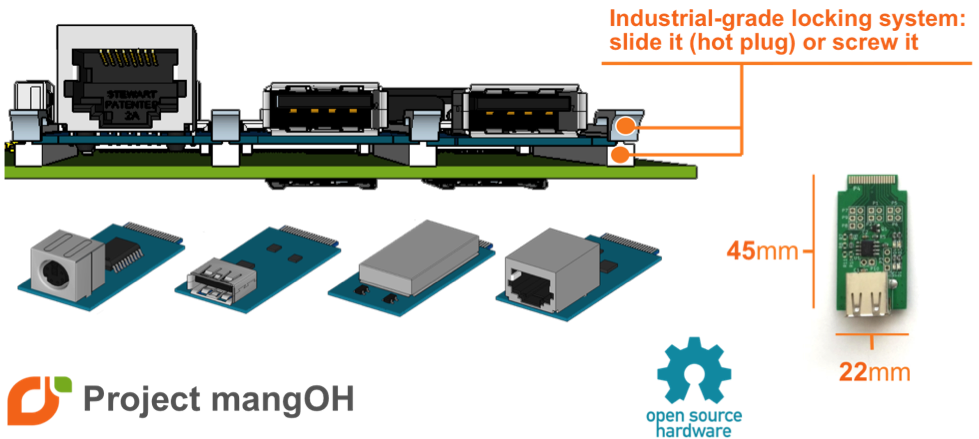Note: this post has been written for M2M Now magazine and has been originally posted here.
Introduction
Open source hardware initiatives have emerged to fulfil educational needs. Arduino is maybe the most well-known example. It has been very successful so far, but its reach has been mainly limited to DIYers, teachers and students, or engineers who want to “play with,” discover, or showcase a technology. However, truly open source hardware has not been widely used in the industry. But a new kind of open source hardware is now emerging.
Open Source License
What makes a piece of hardware “open source”? First and foremost, a complete set of documentation (such as schematics and gerbers), is made publicly available, with an open source licence allowing anybody to reuse it, modify it, share it freely and build a new product based on it. The documentation must be comprehensive enough to allow you to reproduce the hardware with minimal effort (send the gerber files to a manufacturer online and get the hardware back within a few days), or to easily modify it for your own purposes.
With this definition in mind, not all “open source hardware” or “open hardware” in the market today is fully open source. For example, Raspberry Pi (more than 5 million units sold so far) offers a proprietary license. While you can use it “as is” to test a technology, you are not allowed to copy it without an agreement with the Raspberry Pi foundation. Because of this, a lot of companies use Raspberry Pi to make demos, but not for actual products.

The needs of the industry
The Internet of Things has a pressing need: to reduce the daunting complexity of building every piece of an IoT solution -- the hardware, the embedded software, communications layer, server and associated software. This requires a variety of engineering skills. And open source hardware, with such big communities, well designed and well tested hardware pieces would be very compelling if they fit the following requirements:
Business-friendly open source licenses
Most available open source hardware options are using a public copyright license, such as the “Creative Commons Share Alike” license, which requires you apply the same license to your resulting product. This is the case for Arduino, mBed HDK, BeagleBoards, Particule (formerly Spark), and Tessel, to name a few. These companies will require payment to reuse their designs to build a non-open-source product for commercial purposes.
The industry needs business-friendly open-source licenses. As an example, Project mangOH (more details below) is released under a “Creative Commons Attribution” license, which comes with no other constraint than to give credit back to the open source project in the documentation. That’s all. You’re free to use the design for your own commercial products.
Simplify productization
Most open source hardware platforms are not designed for productization. Most of the time, they are meant to be used as is, as an open board or perhaps with some basic plastic casing, with wires all around. In general, they fit poorly into an industrial casing.
Expandability is obtained using daughter boards that are stacked onto the product, which complicates the casing design for the end product and prevents any hot-plugging of daughter hardware.
To summarize, although they are great for prototyping a concept, current open source hardware will force you to redesign a new board from scratch if you decide to take the plunge and build your product, not only because of the license as we discussed, but also because of the non-modularity of the design itself, and the lack of industrial-grade components.

Project mangOH
Project mangOH was born from a reference design provided by Sierra Wireless with a business-friendly open source license (Creative Commons Attribution). It was introduced at the Sierra Wireless Innovation Summit 2015 in Paris.
Project mangOH has been designed with productization concerns in mind:
- It is a Eurocard format (100x120 mm), which is very common in the industry. Plenty of casing options are already available.
- To allow expandability, mangOH provides industrial-grade connectors (QSFP+) called “IoT Connectors”. These connectors can receive dongle-like boards that can slide into the platform, even in hot-plug mode. This results in an extensible and flexible end product. For example, let’s say you want to build a home automation/energy/security box. You want compatibility with any kind of local network, such as WiFi, Bluetooth, Zigbee, Thread, or Dust, and you want to use any sensor on these networks. mangOH will allow you to easily do that. Or, if your product has a fixed interface, then these IoT modules can be factory-installed using screws.
- mangOH has been designed with casing concerns in mind too. Depending on the IoT boards, front and rear faceplate design files can be generated online and then 3D printed for your prototype or manufactured for your final product.
- mangOH uses industrial-grade components or footprint-compatible options, and offers a modular design to ease editing of the design to remove unwanted features.

The project ecosystem is currently being built around technology providers (to provide more IoT connectors, for example), hardware manufacturers, distributors, system integrators, and the developer community. Early adopters are already playing with it – multiple demos on mangOH were on show during the Innovation Summit 2015 in Paris, and many developers have already been trained.
Project mangOH aggregates a growing number of members including Element14, Freescale, Linear Technology, Sierra Wireless, Talon Communications, and Texas Instruments.
In the next phase (towards the end of 2015), manufacturing and the distribution arrangements for mangOH will be set up, including all accessories and IoT boards, so that more new developers can buy and start to play with it.
Join us or subscribe to get notified
Visit http://mangoh.io and subscribe or leave us a comment. You are welcome to join the project! If you provide your email address, you will be notified when mangOH is available for you.
See also